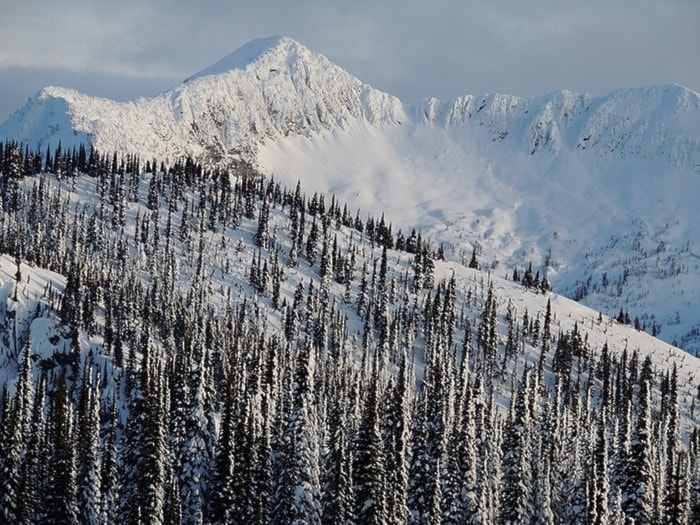Avalanche Awareness Day is set for January 18 and Whitewater Ski Resort is including it as part of its annual two-day Winter Carnival.
Every year outdoor enthusiasts of various skill levels take part in activities that explore the backcountry. Many of them have some knowledge of avalanche safety precautions, ranging from novice to expert. But with an average of 10 avalanche-related deaths in BC every year, even the experts know there is always more to learn and that there is great value in practicing your avalanche rescue skills.
Whitewater provides avalanche skills training and resources and this year’s theme is The Backcountry Starts Here, to help promote the fact that when you duck the rope at a ski hill, that is where the backcountry starts.
The beacon basin is a place to review beacon use and probing skills and this free amenity is located in an open meadow close to the day lodge. There is also information at their Avalanche Centre located across from the customer service desk in the lodge, complete with up to date avalanche hazards and a sign in sheet for skiers and borders accessing the slack country from the ski hill.
This weekend, as part of Winter Carnival, the resort will have a rescue demonstration by their Snow Safety team [ski patrol] at the Silver King Base at 1 p.m. and the Beacon Olympics at 2 p.m.
Nelson Search and Rescue will have information stations at the base lodge and at back country access spots on the mountain. The Discovery Backcountry program is a new this year and is designed for intermediate to advanced skiers/snowboarders who are new to touring or new to the area.
Both Whitewater and Summit Mountain Guides in Nelson offer avalanche skills training (AST) courses. AST level 1 is a two to three-day course and highly recommended for anyone interested in backcountry travel. The course is also a pre-requisite for the CAA level 1 avalanche course.
Avalanche Canada provides up to date forecasts of avalanche hazards and risk across BC at avalanche.ca. Their forecast for the Kootenay Boundary area rates the hazard at considerable in elevations in the treeline and alpine, and moderate risk below the treeline. With that comes the warning that “The forecast snow will fall on a layer of surface hoar above a widespread crust. In areas that receive the greater snowfall amounts this could result in touchy avalanche conditions especially in wind loaded terrain.”
The organization announced on Wednesday the start of the Mountain Information Network (MIN), a new tool that provides crowd-sourced observations for public avalanche safety. A new app for recreational users lets them submit site observations and access other users observations as well.
“The MIN is fully integrated with our website at avalanche.ca,” said Karl Klassen, manager of Avalanche Canada’s Public Avalanche Warning Service.
“Submissions to the network are geo-tagged, so others can easily see where the observations were made. The MIN gives all backcountry users access to real-time information and observations, which provides valuable decision-making support for travelling in avalanche terrain.”
Submitting to the MIN is easily done through a smartphone or on a home computer. A menu of items is provided to guide the observations and there is also the capability to send photos and add comments. These submissions then appear as small blue icons on the map in the app and at avalanche.ca, which other users can click to view.
Avalanche deaths:
A report prepared by the BC Coroner last spring said there are an average of 10 avalanche-related deaths per year in BC. More than 90 per cent of people killed are males at the average age of 36-years-old, with the majority of deaths occurring while snowmobiling and skiing in the Interior.
Between January 1, 1996 and March 17, 2014, there were 192 avalanche-related deaths in BC.
- The average age was 35.9 years
- 90.6 per cent of decedents were male and 9.4 per cent were female
- The majority of avalanche-related deaths occurred in the Interior (68.8 per cent) and Northern (21.4 per cent) regions
- Snowmobiling was the most common activity (41.1 per cent), followed by skiing (33.9 per cent), heli-skiing (13.5 per cent), snowboarding (5.2 per cent), hiking/climbing (4.2 per cent), and occupational activities (2.1 per cent)
- The majority of decedents were permanent residents of BC (39.6 per cent), Alberta (30.7 per cent), or Washington (4.7 per cent).
